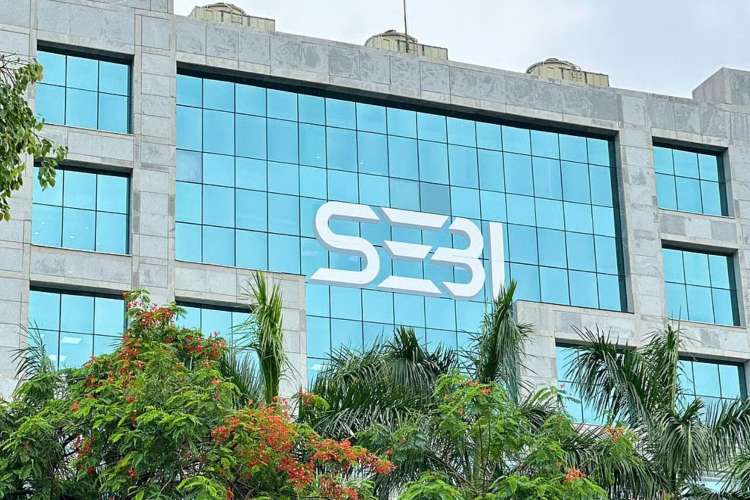
India’s capital market regulator has overhauled rules for block deals — bulk trades executed by institutional investors — to enhance transparency and align Indian practices with global norms. In a circular issued on October 8, the Securities and Exchange Board of India raised the minimum size for such trades from ₹10 crore to ₹25 crore, redefining what qualifies as a large transaction. The reform, effective from December 7, 2025, is part of SEBI’s broader effort to strengthen governance and reduce opacity in high-value transactions.
The move marks the first major revision since 2017 and effectively excludes smaller and mid-sized investors who had begun using the block deal mechanism for moderately large trades. By restricting access to genuine institutional players — mutual funds, insurers, and foreign portfolio investors — SEBI hopes to prevent misuse and improve market discipline.
India’s stock market has changed dramatically since the mechanism was first introduced in 2005. The combined assets under management of domestic mutual funds have more than quadrupled in the last decade, while foreign portfolio investors have injected close to ₹1.6 lakh crore in FY25 so far. The new framework reflects this maturing ecosystem and SEBI’s attempt to ensure that India’s market architecture evolves with its growing institutional depth.
READ I In an era of expensive capital, confidence is the key asset
Why block deals matter
Block deals allow institutional investors to buy or sell large quantities of shares without destabilising market prices. These trades are conducted in a special trading window outside the continuous market to prevent volatility. When large transactions occur in the open market, they can cause sudden price swings—something block windows are designed to avoid.

Under the revised framework, SEBI has mandated that block deals must now lead to actual share delivery, eliminating the practice of speculative offsetting. This ensures every transaction results in a real transfer of ownership. The regulator has also widened the permissible price band for such trades, previously set at 1–3% above or below the reference price.
Revised timings and price mechanism
The updated system will continue with two daily trading windows. The morning session will run from 8:45 a.m. to 9:00 a.m., and the afternoon window from 2:05 p.m. to 2:20 p.m. For the morning session, the reference price will be the previous day’s closing rate, while in the afternoon, it will be based on the volume-weighted average price (VWAP) of trades between 1:45 p.m. and 2:00 p.m.

SEBI’s internal analysis suggests that the new threshold reflects current market realities: nearly three-quarters of all block deals in FY25 were already above ₹25 crore. About 90% exceeded ₹14 crore, 75% crossed ₹26 crore, 60% were above ₹50 crore, and half surpassed ₹84 crore. The revision thus formalises prevailing trading behaviour rather than disrupting it.
Transparency and global alignment
One of the key changes concerns disclosure. Exchanges will now be required to publish the details of each block deal—including stock name, quantity, price, and counterparties — aftermarket hours on the same day. This move will improve visibility and curb backroom deals or insider trading.
SEBI’s intent is also to align India’s block deal mechanism with practices in developed markets, where transparency and strict eligibility norms are standard. The regulator has noted that speculative or non-genuine trades were eroding confidence in the system and distorting price discovery. Limiting access to large, long-term investors will restore integrity to this corner of the market.
Globally, regulators such as the US SEC and UK’s FCA maintain tighter post-trade reporting timelines, often within minutes, and employ algorithmic surveillance to detect coordinated trades. SEBI’s new framework mirrors these best practices, positioning India’s markets closer to European standards. For foreign investors weighing regulatory predictability, such alignment adds to India’s credibility as a stable, rules-based investment destination.
Technology and trading dynamics
Modern block trades are increasingly shaped by algorithmic execution and high-frequency strategies that can fragment liquidity or obscure market intent. SEBI’s decision to mandate delivery and tighten the permissible price range complements its broader effort to regulate algorithmic trading, including new frameworks on order management and co-location oversight. These guardrails are vital to ensure that technology does not create new avenues to sidestep compliance or transparency norms.
As India’s markets become more digitised, real-time monitoring and audit trails will determine whether the block deal system remains both efficient and fair. SEBI’s regulatory posture indicates a shift toward pre-emptive supervision rather than post-facto correction—a hallmark of mature market oversight.
Possible market impact
The reform is not without its downsides. Raising the threshold could push smaller block trades back into the regular market, potentially triggering sharper price movements and higher transaction costs. High-net-worth individuals and family offices—frequent users of the old system—may find themselves excluded.
Still, analysts believe the benefits outweigh the risks. A higher entry bar will make the market fairer by curbing manipulation. When smaller players use block windows to conceal market intent, they distort liquidity and price discovery. The new framework closes this “VIP lane,” ensuring that the mechanism serves only its intended purpose: facilitating genuine institutional transfers.
The impact on liquidity, however, warrants close attention. Mid-cap and small-cap stocks, which already experience limited depth, could see wider bid-ask spreads if mid-sized transactions return to open markets. This may increase short-term volatility, even if long-term integrity improves. Balancing transparency with liquidity will therefore be SEBI’s next challenge.
A broader regulatory push
The reform is part of SEBI’s larger campaign to tighten oversight of India’s fast-growing capital markets. Recent steps include stricter risk and capital norms for intermediaries, greater scrutiny of derivatives trading, and closer monitoring of algorithmic and cross-border trading activity.
This policy continuity is central to India’s investment story. As the country’s market capitalisation nears $5 trillion, SEBI’s credibility as a vigilant yet predictable regulator will shape investor confidence as much as economic growth itself. The regulator’s growing assertiveness against complex global trades and offshore structures reveals its shift toward anticipatory governance.
With India positioning itself as a global investment destination, regulatory quality is becoming as critical as market growth. By raising the bar on transparency and execution discipline, SEBI is sending a signal that India’s markets no longer rely on exemptions — only on standards. The next phase of India’s financial maturity will rest not just on capital inflows, but on trust, integrity, and the steady hand of credible regulation.
